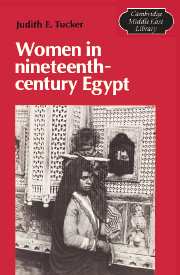Book contents
- Frontmatter
- Contents
- List of illustrations
- Acknowledgments
- List of abbreviations
- Note on transliteration and dates
- Introduction
- 1 Ploughs and shares: women, agricultural production, and property
- 2 Spindles and songs: women in urban occupations
- 3 Private and public life: women and the growth of the State
- 4 Women, resistance, and repression
- 5 The practice of slavery: women as property
- Conclusion
- Appendix: The court records, overview and sample
- Notes
- Glossary
- Bibliography
- Index
Appendix: The court records, overview and sample
Published online by Cambridge University Press: 28 October 2009
- Frontmatter
- Contents
- List of illustrations
- Acknowledgments
- List of abbreviations
- Note on transliteration and dates
- Introduction
- 1 Ploughs and shares: women, agricultural production, and property
- 2 Spindles and songs: women in urban occupations
- 3 Private and public life: women and the growth of the State
- 4 Women, resistance, and repression
- 5 The practice of slavery: women as property
- Conclusion
- Appendix: The court records, overview and sample
- Notes
- Glossary
- Bibliography
- Index
Summary
I. The courts
Extant records from the nineteenth century sharī‘ah courts of Egypt fall into two main categories: minutes from the proceedings of the courts of Cairo, housed in the MaḤkamah al-shar‘īyyah archives in Cairo, and minutes from various provincial courts, housed in the Dār al-MaḤfuẓāt in Cairo.
A. Cairo courts
The following list, based on indexes in the MaḤkamah al-shar‘īyyah archives, includes courts with extant records from the nineteenth century. Each sijill (register) is 300 to 500 pages in length and contains anywhere from 600 to several thousand cases.
B. Provincial courts
The provincial court records are less complete; the Dār al-MaḤfuẓāt holds the minutes of scattered provincial courts, by no means a consistent or systematic collection of provincial records. The following list, based on the holdings of the Dār al-MaḤfuẓāt, is composed of courts with extant records from the nineteenth century. Each sijill from the provincial courts is roughly 200 pages in length and contains from 400 to 800 cases.
II. The sample
A. Cairo sample
I. The Bāb al-‘Alī: The Bāb al-‘Alī registers were chosen because they record cases continuously throughout the period under study and appear to be complete. One year per decade for the first seven decades of the nineteenth century was arbitrarily selected for study:
Up through the sample year of 1246, the MBA registers recorded a wide variety of cases, including: registration of inheritance, debt and guardianship, proxy appointments, conversion to Islam, property sales, divorce agreements and decrees, family support, marriage and mahr agreements, waqf arrangements, and money payments of all kinds.
Beginning with the sample year of 1255–1256, the MBA registers record, almost exclusively, property sales and waqf arrangements.
- Type
- Chapter
- Information
- Women in Nineteenth-Century Egypt , pp. 199 - 203Publisher: Cambridge University PressPrint publication year: 1985



